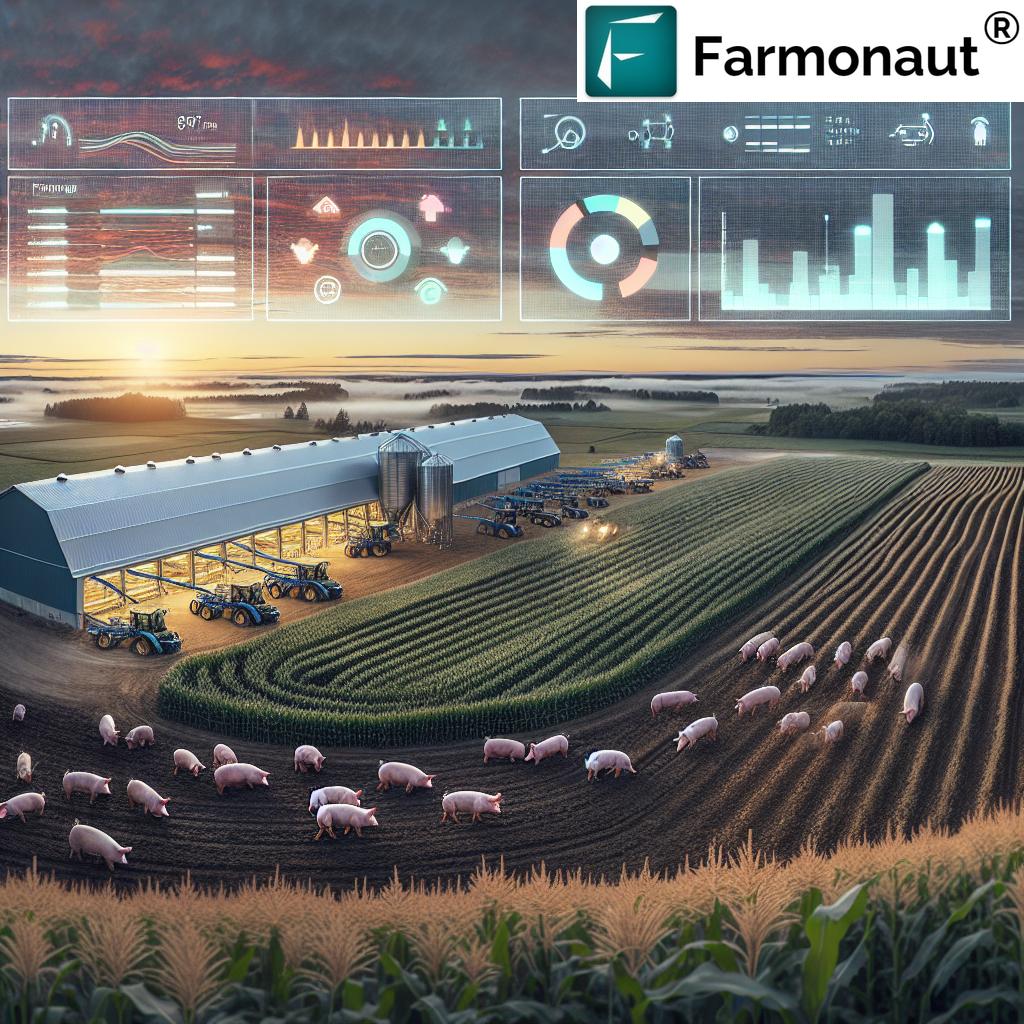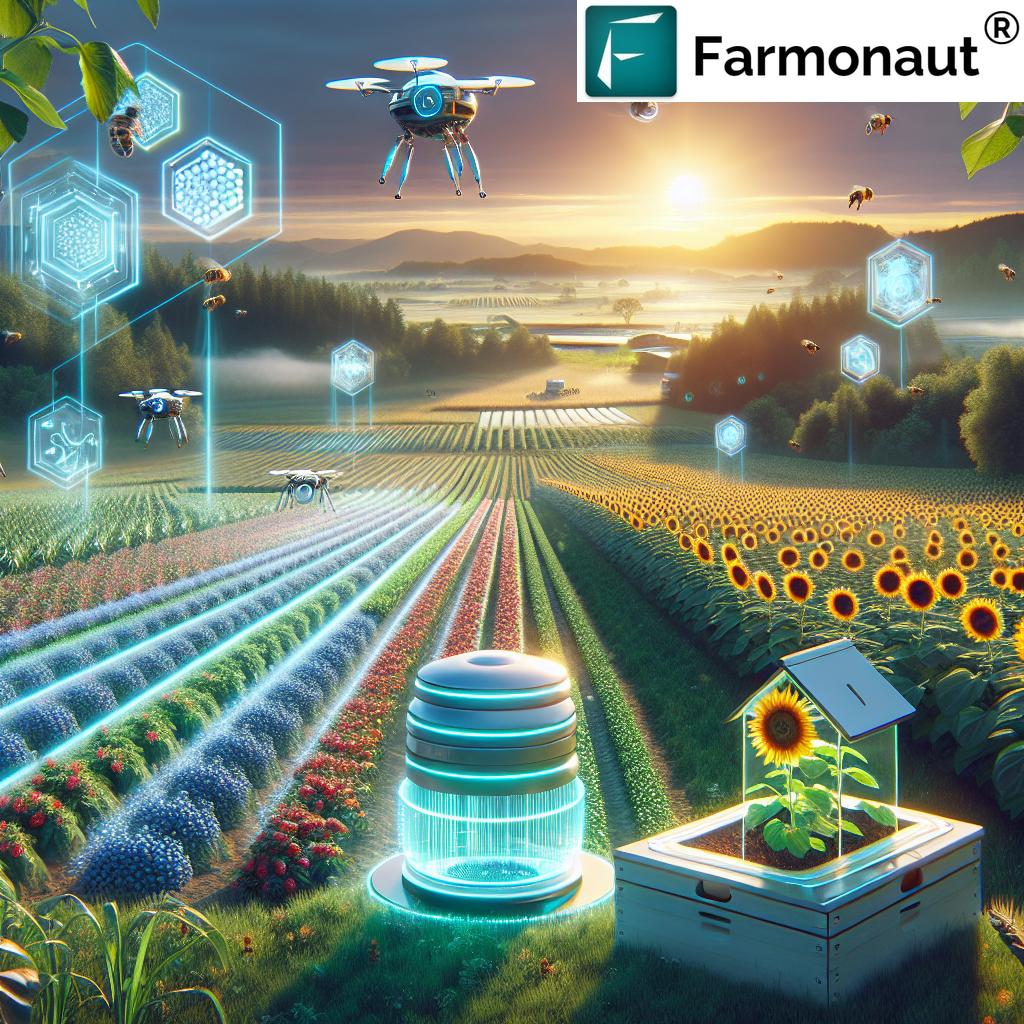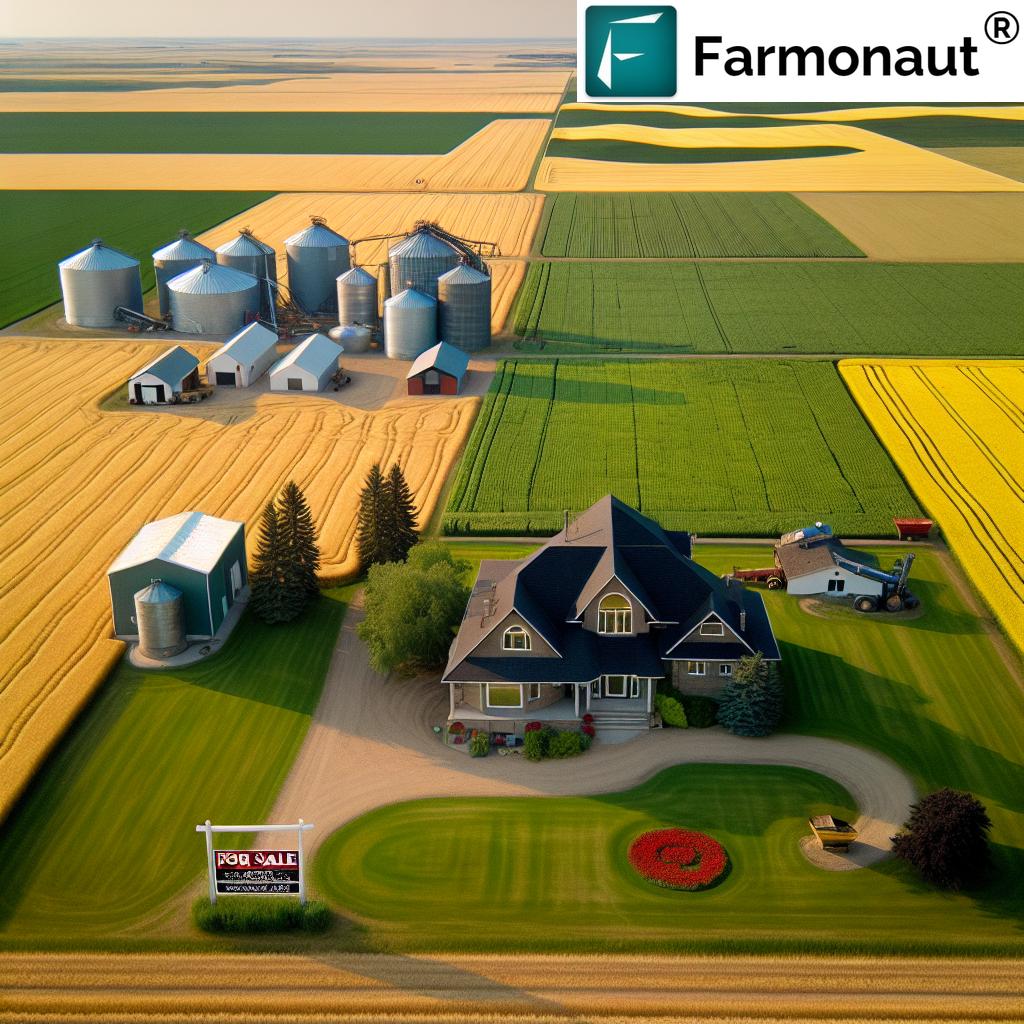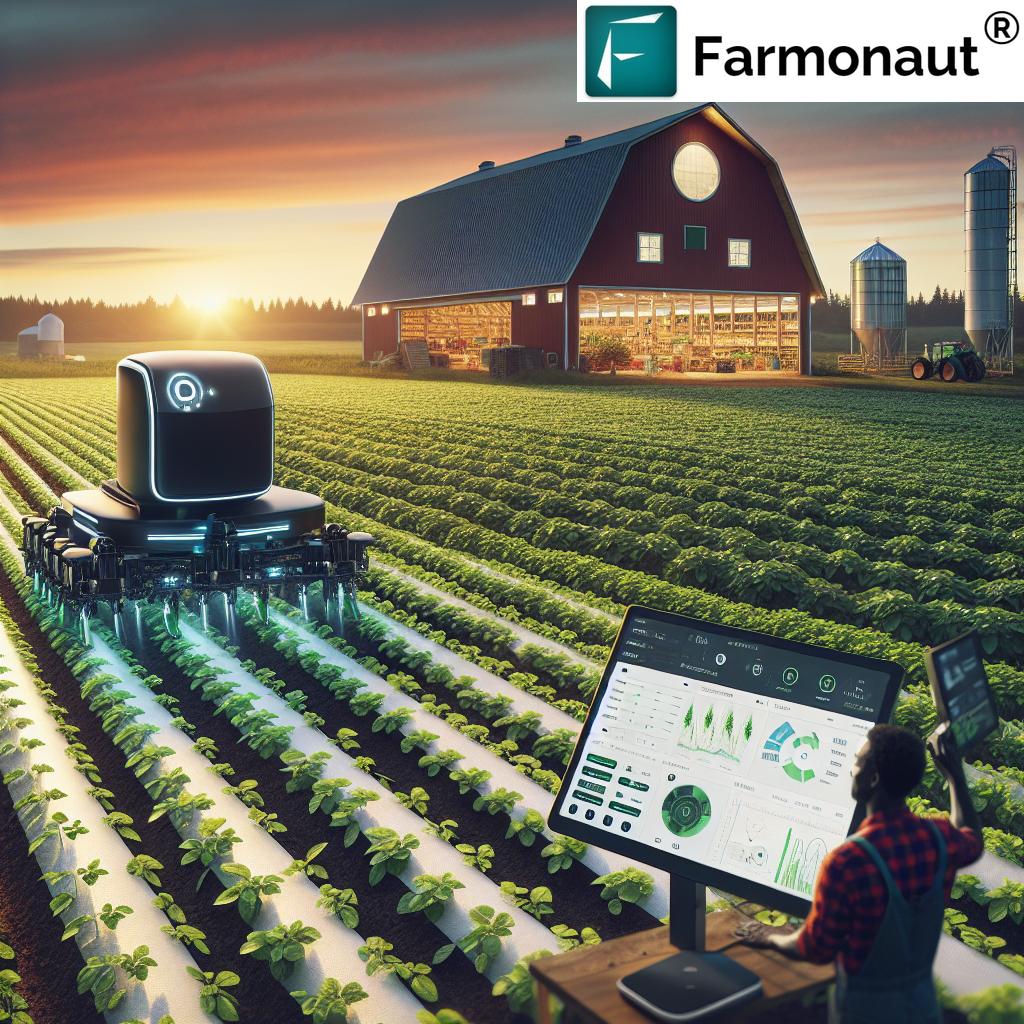Ontario’s Hog Industry in 2023: Navigating Challenges and Exploring Sustainable Solutions
“Ontario’s hog industry faced challenges in July 2023, with farm cash receipts reflecting rising production costs and market instability.”
Welcome to our comprehensive analysis of Ontario’s hog industry in 2023. As we delve into the intricate landscape of Canadian agriculture, we’ll explore the challenges faced by farmers, particularly in the hog farming sector, and examine the innovative solutions emerging to address these issues. From rising production costs to market instability, we’ll provide an in-depth look at the factors shaping the industry and the strategies being employed to navigate these turbulent times.
The Current State of Ontario’s Hog Industry
The hog industry in Ontario, a crucial component of Canadian agriculture, has encountered significant hurdles in 2023. Farm cash receipts, a key indicator of the sector’s economic health, paint a complex picture of an industry grappling with multiple challenges. Let’s break down the primary factors influencing the current state of affairs:
- Rising production costs
- Market instability
- Declining export opportunities
- Environmental pressures
- Regulatory changes
These factors have collectively created a perfect storm for hog farmers in Ontario, necessitating a reevaluation of traditional farming practices and a search for innovative solutions.
Economic Impact on Canadian Agriculture
The challenges faced by the hog industry are not isolated; they ripple through the entire agricultural sector. As one of Canada’s primary agricultural products, the struggles in hog farming have far-reaching implications for the nation’s economy. Let’s examine how these challenges are impacting various aspects of Canadian agriculture:
- Reduced farm income and profitability
- Strain on rural economies
- Pressure on related industries (feed suppliers, equipment manufacturers)
- Shifts in land use and crop production
- Changes in consumer behavior and meat consumption patterns
To better understand the magnitude of these changes, let’s look at a comparative overview of Ontario’s hog industry between 2022 and 2023:
| Metric | 2022 | 2023 | Percent Change |
|---|---|---|---|
| Farm Cash Receipts | $2.5 billion | $2.3 billion | -8% |
| Production Costs | $1.8 billion | $2.1 billion | +16.7% |
| Export Volume | 1.2 million tonnes | 1.0 million tonnes | -16.7% |
| Adoption of Precision Technologies | 35% | 45% | +28.6% |
| Corn Yield | 170 bushels/acre | 165 bushels/acre | -2.9% |
| Wheat Yield | 85 bushels/acre | 80 bushels/acre | -5.9% |
| Government Support Programs | $500 million | $600 million | +20% |
This table clearly illustrates the significant changes occurring in Ontario’s hog industry, with notable declines in farm cash receipts and export volumes, coupled with rising production costs. However, it also highlights a positive trend in the adoption of precision technologies, indicating that farmers are actively seeking solutions to these challenges.
The Role of Sustainable Farming Practices
“Canadian farmers are exploring sustainable farming practices and precision technologies to optimize crop yields across various crops, from corn to wheat.”
In response to the challenges facing the hog industry and the broader agricultural sector, there’s a growing emphasis on sustainable farming practices. These approaches aim to not only mitigate the economic pressures but also address environmental concerns and improve long-term viability. Key sustainable practices being adopted include:
- Precision agriculture techniques
- Integrated pest management
- Soil conservation methods
- Water-efficient irrigation systems
- Crop rotation and diversification
At Farmonaut, we’re committed to supporting farmers in their transition to more sustainable practices. Our satellite-based farm management solutions provide real-time insights that enable farmers to make data-driven decisions, optimizing resource use and improving crop yields.

Precision Technologies: A Game-Changer for Crop Yields
The adoption of precision technologies is proving to be a game-changer in optimizing crop yields. These technologies allow farmers to monitor and manage their fields with unprecedented accuracy, leading to more efficient use of resources and improved productivity. Some key precision technologies include:
- Satellite imagery for crop health monitoring
- AI-powered advisory systems
- GPS-guided machinery
- Soil sensors and weather stations
- Drone technology for field mapping and crop spraying
Farmonaut’s platform integrates many of these technologies, offering farmers a comprehensive solution for precision agriculture. Our satellite-based crop health monitoring and AI advisory system provide valuable insights that help farmers make informed decisions about irrigation, fertilizer usage, and pest management.
Explore Farmonaut’s precision agriculture solutions:
Market Instability and Export Challenges
The hog industry in Ontario has been particularly affected by market instability and declining export opportunities. Several factors contribute to this situation:
- Global trade tensions
- Changing consumer preferences
- Competition from alternative protein sources
- Currency fluctuations
- Logistical disruptions
To address these challenges, the industry is exploring new markets and diversifying product offerings. Additionally, there’s a growing focus on value-added products and niche markets to offset losses in traditional export channels.
The Impact on Crop Production
The challenges in the hog industry have broader implications for crop production in Ontario. As hog farmers face economic pressure, there are ripple effects on the demand for feed crops like corn and soybeans. This, in turn, influences planting decisions and crop management strategies across the agricultural sector.
Key crops affected include:
- Corn
- Soybeans
- Wheat
- Barley
- Hay and forage crops
Farmers are adapting by diversifying their crop rotations, exploring new varieties, and implementing precision agriculture techniques to optimize yields and reduce input costs.
Innovative Approaches to Farm Equipment Usage
In response to rising production costs, farmers are adopting innovative approaches to farm equipment usage. These strategies aim to maximize efficiency and reduce operational expenses:
- Equipment sharing and cooperatives
- Precision agriculture technologies for optimal machinery use
- Leasing and rental options
- Investment in multi-purpose equipment
- Regular maintenance and upgrades for longevity
Farmonaut’s fleet and resource management tools support these efforts by helping farmers optimize their equipment usage and reduce operational costs.
The Role of Government Policies
Government policies play a crucial role in supporting rural businesses and the agricultural sector. In response to the challenges faced by the hog industry and other agricultural sectors, various policy initiatives have been implemented or proposed:
- Financial support programs for farmers
- Investment in rural infrastructure
- Trade negotiations to open new export markets
- Research and development funding for agricultural innovation
- Environmental incentives for sustainable farming practices
These policies aim to create a more resilient agricultural sector and support farmers through periods of market volatility and economic pressure.

Emerging Opportunities in Exports
Despite the challenges, there are emerging opportunities in agricultural exports for Canadian farmers. These include:
- Growing demand for high-quality pork in Asian markets
- Increasing interest in plant-based proteins
- Specialty and organic product markets
- Value-added processed goods
- Agri-food technology exports
By leveraging these opportunities, the Canadian agricultural sector can diversify its export portfolio and reduce dependency on traditional markets.
Farmonaut’s Role in Supporting Canadian Agriculture
At Farmonaut, we’re committed to supporting Canadian farmers as they navigate these challenging times. Our cutting-edge solutions are designed to help farmers boost productivity and make informed decisions in an ever-changing agricultural landscape. Here’s how we’re making a difference:
- Real-time crop health monitoring through satellite imagery
- AI-powered advisory systems for optimized farm management
- Blockchain-based traceability solutions for supply chain transparency
- Resource management tools for improved efficiency
- Carbon footprint tracking for sustainable farming practices
Explore our API solutions for developers and businesses:
Future Outlook and Mitigation Strategies
As we look to the future of Ontario’s hog industry and the broader agricultural sector, several mitigation strategies and trends are emerging:
- Increased adoption of precision agriculture technologies
- Focus on sustainable and regenerative farming practices
- Diversification of farm income streams
- Investment in research and development for disease-resistant breeds
- Collaboration between farmers, researchers, and technology providers
These strategies aim to build a more resilient and sustainable agricultural sector that can withstand future challenges and capitalize on emerging opportunities.
Conclusion
Ontario’s hog industry in 2023 faces significant challenges, from rising production costs to market instability and declining export opportunities. However, these challenges are driving innovation and adaptation across the agricultural sector. By embracing sustainable farming practices, precision technologies, and innovative approaches to resource management, Canadian farmers are positioning themselves for long-term success.
At Farmonaut, we’re proud to be part of this transformation, providing cutting-edge solutions that empower farmers to make data-driven decisions and optimize their operations. As we move forward, the resilience and ingenuity of Canadian farmers, coupled with supportive policies and technological advancements, will be key to navigating the challenges and seizing the opportunities that lie ahead.
FAQ Section
Q: What are the main challenges facing Ontario’s hog industry in 2023?
A: The main challenges include rising production costs, market instability, declining export opportunities, environmental pressures, and regulatory changes.
Q: How are precision technologies helping farmers optimize crop yields?
A: Precision technologies like satellite imagery, AI-powered advisory systems, and GPS-guided machinery help farmers monitor crop health, make informed decisions about resource use, and improve overall productivity.
Q: What role does government policy play in supporting the agricultural sector?
A: Government policies provide financial support programs, invest in rural infrastructure, negotiate trade agreements, fund agricultural research, and offer environmental incentives for sustainable farming practices.
Q: How is Farmonaut supporting Canadian farmers?
A: Farmonaut offers satellite-based crop health monitoring, AI advisory systems, blockchain-based traceability solutions, resource management tools, and carbon footprint tracking to help farmers improve productivity and sustainability.
Q: What are some emerging opportunities for Canadian agricultural exports?
A: Emerging opportunities include growing demand for high-quality pork in Asian markets, increasing interest in plant-based proteins, specialty and organic product markets, value-added processed goods, and agri-food technology exports.
Explore Farmonaut’s Subscription Options















